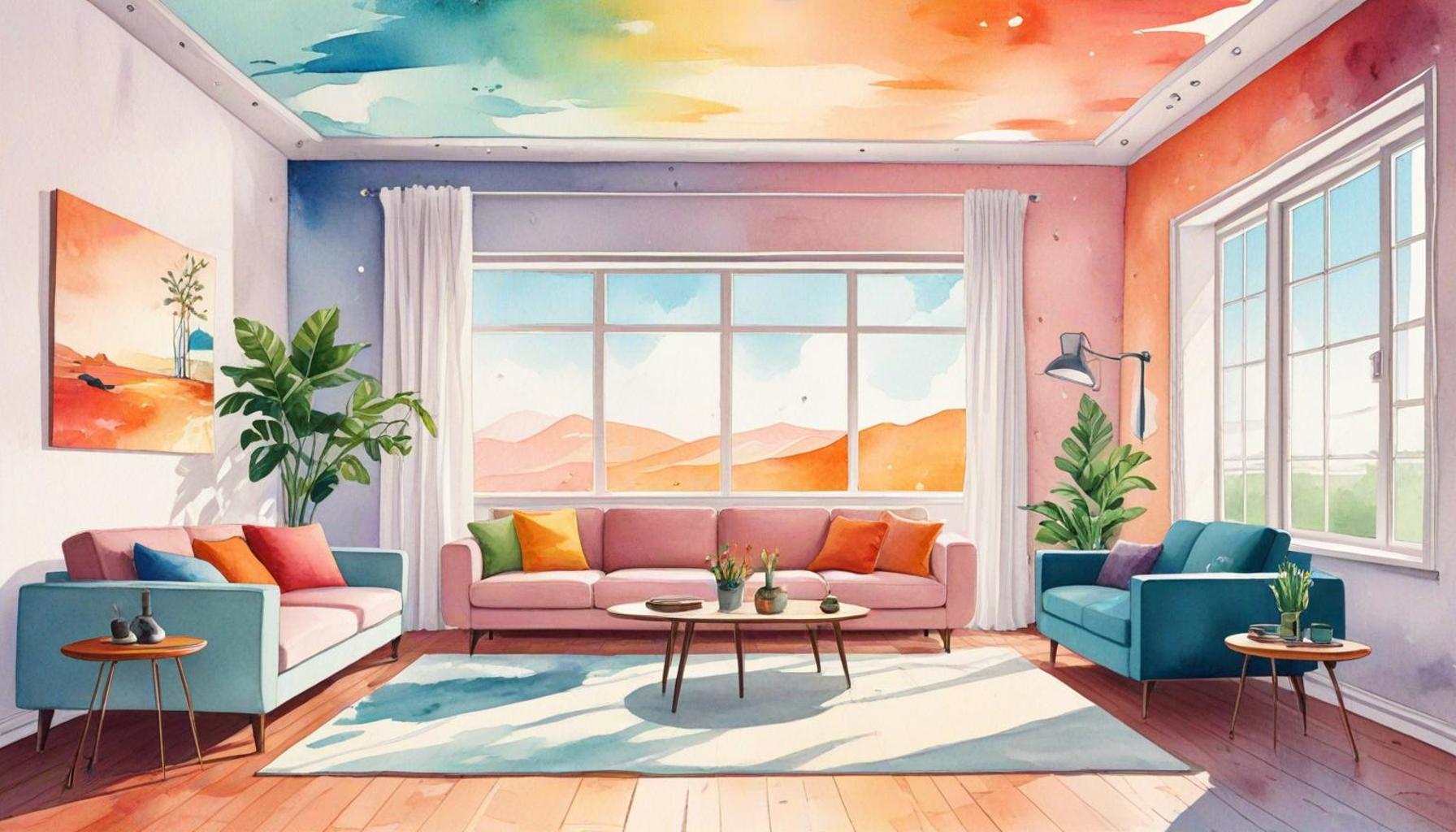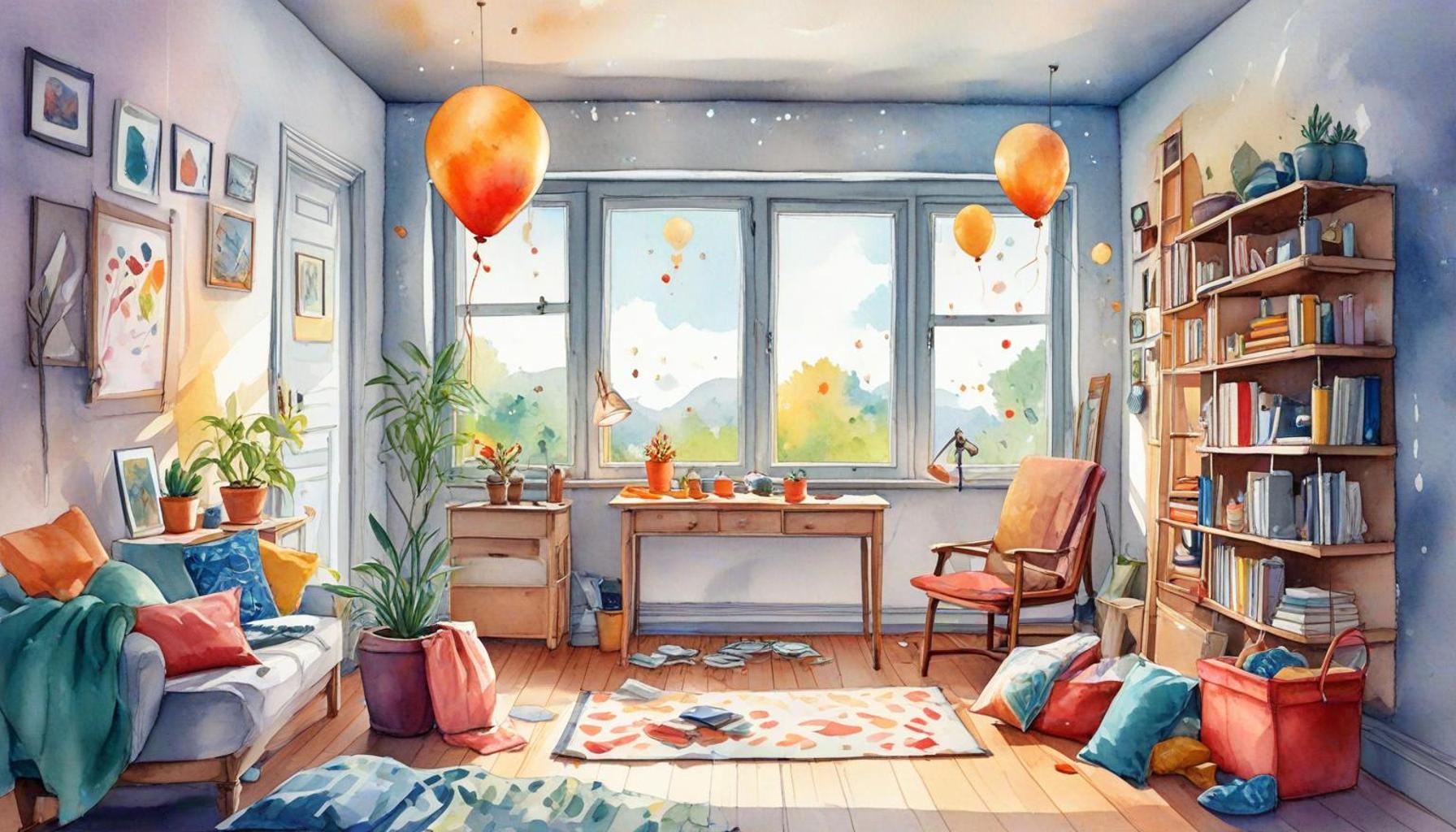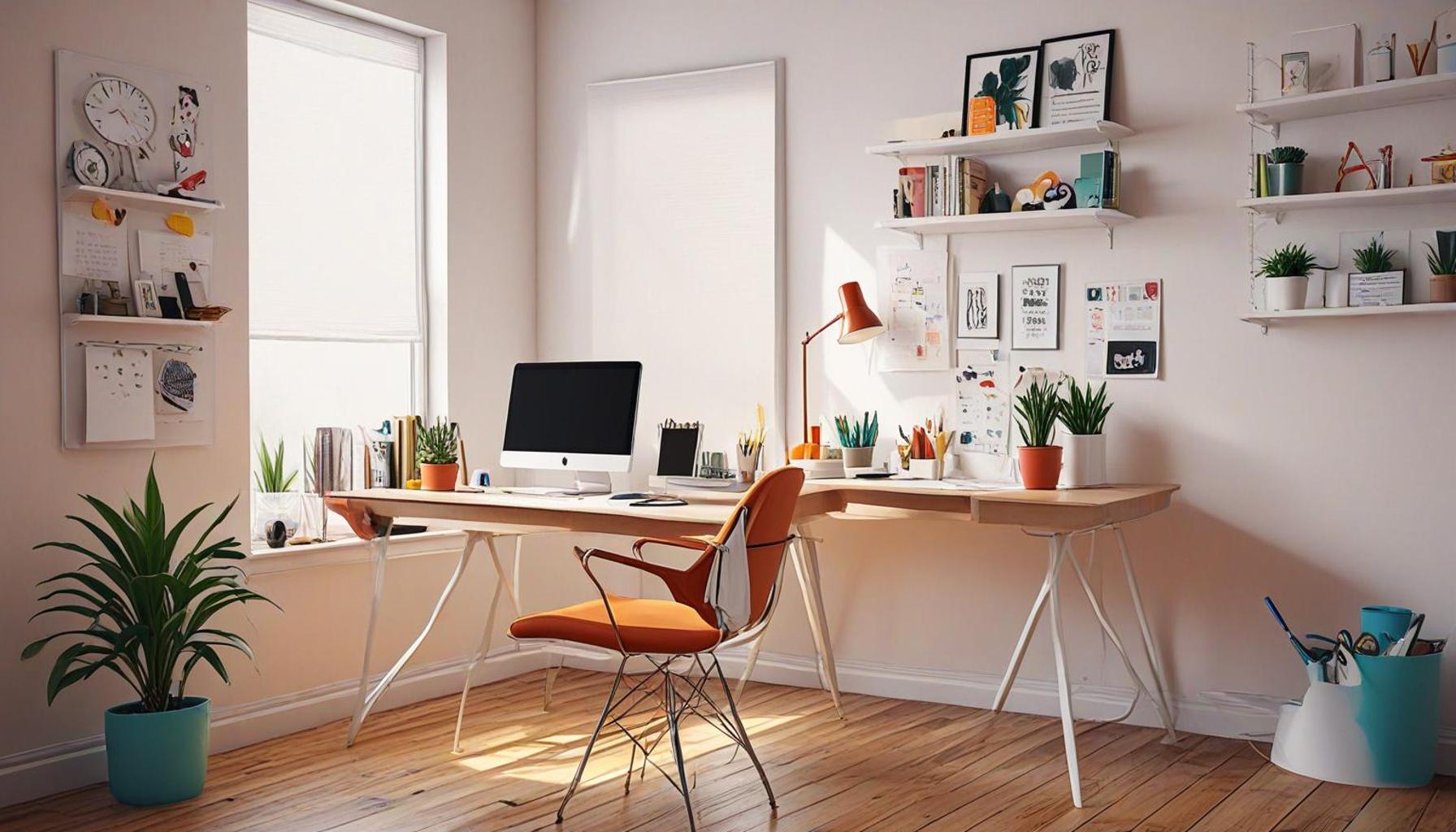The Impact of Technology on Maximizing Space in Minimalist Environments
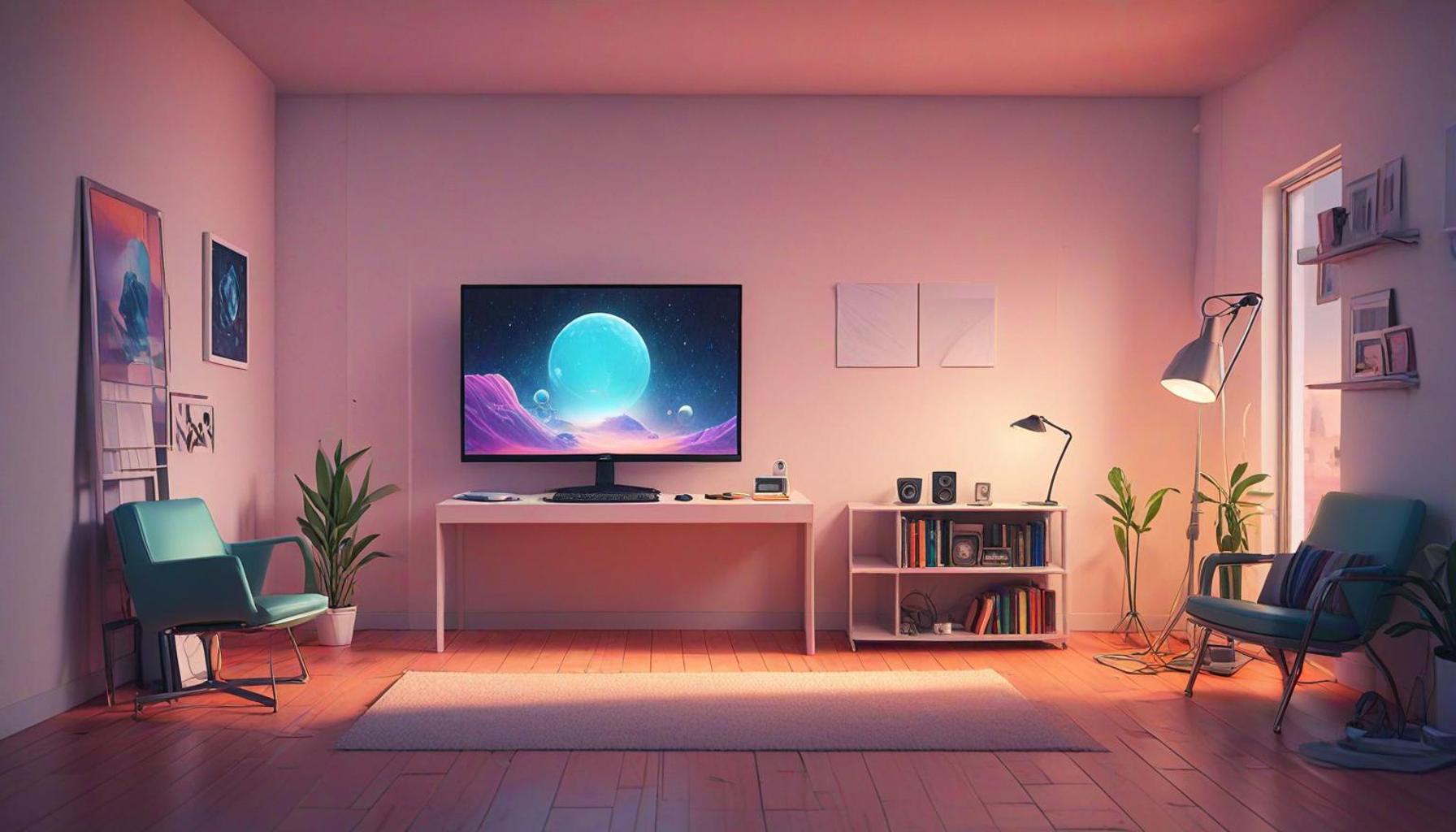
Embracing a New Era of Living
As urbanization continues to rise in the United States, many people find themselves living in smaller spaces than ever before. This lifestyle shift has compelled individuals and families to rethink their approach to homeownership and organization. The minimalist philosophy, which emphasizes simplicity and intentionality, has gained traction as a remedy to the chaos often associated with modern living, promoting the idea that “less is more.” However, while the benefits of minimalism are clear—reduced stress, increased focus, and a more serene home environment—the challenges of achieving a truly minimalist space in a cluttered world still persist.
This is where technology steps in as a transformative ally. Innovative solutions are redefining how we interact with our living environments, making it easier to curate spaces that are both functional and aesthetically pleasing. For instance, consider space-saving furniture options like Murphy beds or extendable dining tables. These multipurpose pieces not only conserve valuable square footage but also adapt to users’ needs without compromising style. Additionally, modern manufacturers are designing furniture that blends seamlessly with smart technology; for example, some coffee tables come equipped with wireless charging stations built right into their surfaces.
Maximizing Efficiency with Smart Systems
Moreover, smart home systems are revolutionizing day-to-day living by promoting efficiency and organization. Devices like smart thermostats and lighting solutions can be programmed to suit individual schedules, enhancing energy savings while also simplifying life at home. These systems can be controlled remotely through smartphones, ensuring that when residents return home after a long day, their environment is already tailored to their preferences, eliminating the need for excess items like multiple lamps or thermostats.
Designing with Advanced Technologies
The advent of virtual and augmented reality applications adds another layer of complexity to minimalist living. Tools like IKEA Place allow users to visualize how furniture will fit into their spaces before making a purchase, alleviating the risk of overcrowding. Users can experiment with different configurations and styles, ensuring that every piece serves a distinct purpose. This kind of thoughtful planning not only maximizes the use of space but also allows homeowners to create multifunctional areas that can easily adapt to varying needs—whether for work, relaxation, or social gatherings.
In conclusion, as we explore the intersection of technology and minimalism, it becomes evident that these advancements are not just tools for decluttering; they are pathways to creating a more harmonious living experience. By embracing these technologies, individuals can streamline their spaces, reduce clutter through automation, and bolster organization with smart storage solutions, all while cultivating a home that reflects their personal style. This journey into evolving living practices is not just about personal preference; it represents a significant shift towards a more sustainable, mindful future. Join us as we uncover practical tips and cutting-edge solutions that highlight the exciting potential of technology in minimalist living.
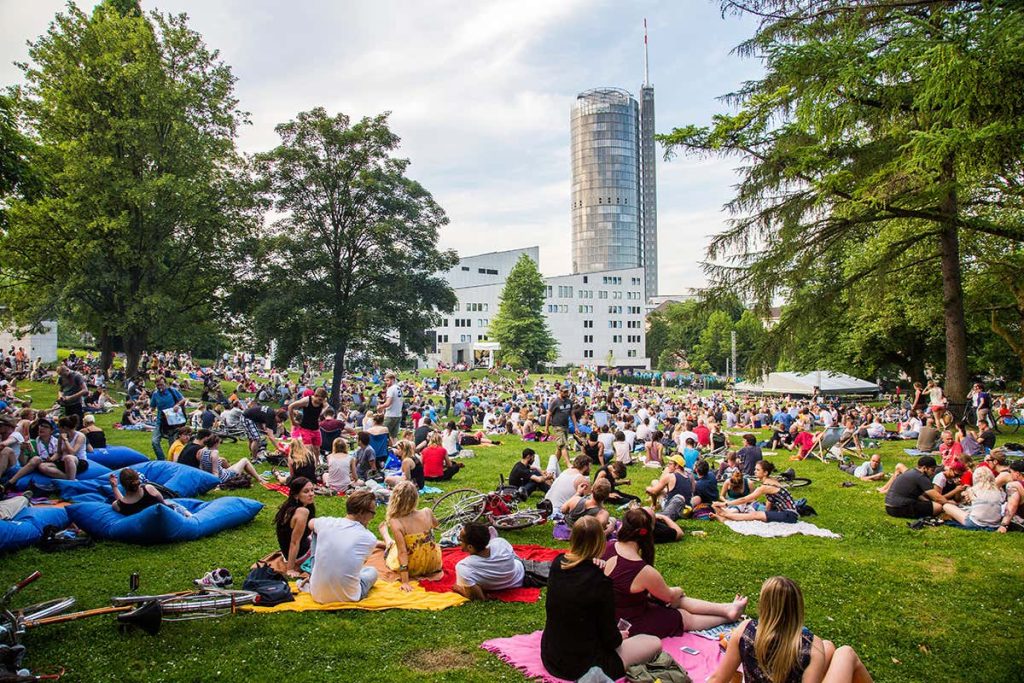
DISCOVER MORE: Click here to enhance your time management skills
Innovative Solutions for Space Optimization
In a world where square footage often comes at a premium, the quest for space efficiency is more relevant than ever. The intersection of technology and minimalist living continues to pave the way for groundbreaking solutions that optimize limited space without compromising comfort or style. With an ever-growing selection of space-efficient designs and smart home technologies, homeowners and renters can fully embrace the minimalist lifestyle while making the most of their available area.
One of the most transformative contributions to maximizing space comes from modular furniture. These versatile pieces can be reconfigured to suit multiple functions, enabling homeowners to transform living areas according to their evolving needs. For instance, a modular sofa can be arranged as a cozy seating area during a quiet evening and then reconfigured into a sleek bed for unexpected guests, illustrating how furniture can be both functional and stylish. The ability to adapt spaces fosters a sense of ownership and personalization, making even the smallest apartments feel warm and inviting.
In addition to modular designs, hidden storage solutions have become essential in minimalist spaces. Furniture such as ottomans and benches with built-in storage compartments can discreetly house essentials while maintaining a clean aesthetic. Moreover, wall-mounted shelving and vertical storage units utilize the vertical space that often goes unnoticed, promoting efficient organization. Homeowners are encouraged to think critically about every area of their living space, ensuring that each nook and cranny serves a purpose rather than simply being a spot for clutter to accumulate.
The Power of Smart Technology
As homes evolve into smart environments, technology plays a critical role in promoting space efficiency. Now more than ever, the focus has shifted toward smart storage solutions that utilize data to help users streamline organization. For example, apps like Sortly and Home Inventory allow homeowners to digitize their belongings, listing items by category and location. This eliminates the need for extensive physical storage, enabling users to know exactly what they own and where it is, all with just a few taps on a smartphone.
Furthermore, integrating smart appliances into minimalist environments also demonstrates technology’s role in maximizing efficiency. Devices such as compact dishwashers, smart refrigerators, and space-efficient washers and dryers are designed to fit seamlessly into smaller spaces while providing essential services. These appliances typically include features that prioritize energy consumption and support an environmentally conscious lifestyle—an increasingly critical factor for many modern homeowners.
Impacts on Home Design Trends
The convergence of technology and minimalist design has sparked new home design trends that emphasize functional minimalism. The shift towards open floor plans encourages adaptability, with each space serving multiple purposes, thus reducing the need for dividing walls or excess furniture. By capitalizing on the synergy between technology and design, living environments can now be tailored to fit personal preferences while promoting a sense of spaciousness—even in compact quarters.
As we delve further into the various technologies making waves in minimalist spaces, it becomes increasingly clear that embracing these innovations not only enhances functionality but also nurtures a mindset of intentional living. With the right blend of technology, creativity, and design, individuals can cultivate spaces that reflect their values while making the most of every square inch.
| Advantages | Details |
|---|---|
| Smart Storage Solutions | Technology enables innovative storage options, such as modular furniture and space-saving designs that adapt to user needs. |
| Enhanced Functionality | Devices like smart home systems can optimize space by automating lighting, heating, and security, reducing clutter and improving efficiency. |
The integration of technology into minimalist environments reshapes how individuals utilize limited spaces. Consumers gain access to a range of tech-driven solutions that heighten functionality without sacrificing aesthetics. This transformation appeals particularly to urban dwellers facing challenges related to small living areas.Moreover, advancements in design software empower architects and homeowners to create customized spaces that maximize every square foot. Tools like virtual reality can provide immersive experiences, allowing individuals to experiment with layouts before making any physical changes. These elements collectively contribute to a more efficient use of space, reflecting a harmonious balance between modern living and minimalism. As one navigates the intersection of innovation and simplicity, remaining aware of how technology continuously influences design choices becomes imperative. Further exploration of how specific gadgets and systems contribute to enhancing living spaces invites readers to delve deeper into this evolving topic.
DISCOVER MORE: Click here to streamline your daily routine
Vertical Living: Embracing Height and Smart Design
As urban areas become increasingly dense, the concept of vertical living has surged in popularity. Architects and designers are now leveraging technology to create homes that not only maximize floor space but also utilize vertical space ingeniously. With the integration of smart architecture, buildings can incorporate features such as balconies, rooftop gardens, and vertical storage systems that extend the use of the living area into the vertical dimension.
One notable example of vertical living can be seen in micro-apartments, which have become a staple of cities like New York and San Francisco. These compact units, often averaging less than 400 square feet, challenge traditional notions of space by emphasizing multifunctionality and innovative storage solutions. Residents might find beds that slide into walls, tables that fold out from cabinets, and even hidden appliances that contribute to both style and space efficiency. Technologies that facilitate these transformations, like automated furniture systems managed through smartphone apps, further enhance the appeal of living in these compact environments.
Augmented Reality and Space Planning
The advent of augmented reality (AR) tools is another technological innovation that greatly influences minimalist design and space utilization. By allowing potential homeowners and designers to visualize their spaces with virtual furniture and layouts, AR applications enable more effective space planning before making any physical changes. For instance, platforms like IKEA Place and Magicplan allow users to create three-dimensional layouts and see how various items will fit within their rooms. This eliminates the guesswork often associated with interior design, resulting in better utilization of every square foot.
Additionally, AR aids in remodeling projects by providing users with a preview of how their space will look post-renovation. By visualizing the integration of built-in shelving or modular furniture arrangements from the comfort of their devices, users can make informed decisions that prioritize functionality while maintaining minimalist aesthetics. This proactive approach to design is particularly valuable in urban environments, where space is limited, and every decision matters.
Smart Home Integration and Automation
The integration of smart home technology is revolutionizing the management of modern living spaces. Systems such as the Amazon Echo or Google Home can control lighting, climate, and even window treatments, allowing for optimal space usage with minimal in-person adjustments. For example, smart blinds can elevate or lower automatically based on the time of day, maximizing natural light while minimizing the need for additional lighting fixtures—an essential aspect of minimalist design.
Automation goes beyond comfort, as it also promotes energy efficiency and sustainability. Smart thermostats adjust temperatures based on occupancy, reducing wasted energy, while programmable lighting systems adapt to your routines. These features not only enhance the actual use of space but contribute to an eco-friendly lifestyle that aligns perfectly with the principles of minimalism.
The Community Aspect of Minimalist Living
The impact of technology on maximizing space extends to the idea of community living through co-housing and shared spaces. Platforms that facilitate the sharing economy, such as Airbnb and co-living startups like WeLive, illustrate how people can come together to share resources and facilities, effectively multiplying the utility of limited space. By embracing communal living arrangements, individuals not only benefit from increased social interactions but also help advocate for an efficient use of resources, thus minimizing their overall environmental impact.
In engaging with modern technologies and innovative designs, minimalist environments are evolving into thoughtfully constructed spaces that reflect not only personal values but also collective efforts toward sustainability, functionality, and aesthetic integrity. As the advancements in technology continue to unfold, minimalist lifestyles will persist as a practical solution for navigating the realities of urban living.
DISCOVER MORE: Click here to dive deeper
Conclusion: The Future of Minimalist Living
The intersection of technology and minimalist living has fundamentally transformed how we utilize space in our densely populated urban environments. With the rise of smart architects designing multifunctional homes and the advent of innovations like augmented reality for spatial planning, individuals are now empowered to make the most out of minimal square footage. The emergence of automated systems has not only enhanced daily convenience but also significantly improved energy efficiency, promoting a sustainable lifestyle that aligns with minimalist principles.
Moreover, the communal aspect of minimalist living facilitated by digital platforms encourages collaboration and resource-sharing, allowing people to coexist in tighter quarters without sacrificing the benefits of community. This shift is indicative of a broader cultural trend toward valuing experiences over material possessions, making way for a more responsible and less wasteful way of living.
As new technologies continue to evolve, the opportunities for maximizing space within minimalist environments will only expand. From innovative storage solutions to advanced design tools that refine the aesthetic and functional aspects of living, the potential to adapt our homes to reflect our values remains limitless. Embracing technology’s role in these designs will not only cater to our present needs but will also forge a path toward future living arrangements that prioritize efficiency and sustainability without compromising comfort.
Ultimately, the future of minimalist living will hinge on our ability to leverage these technological advancements creatively. By understanding and implementing these innovations, we can redefine what it means to live in harmony within our spaces, ensuring that they reflect both personal and collective aspirations for a more sustainable lifestyle.

